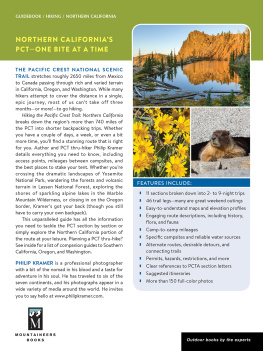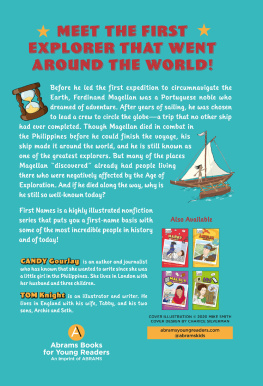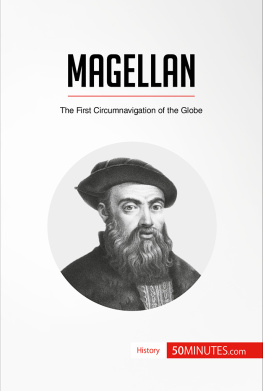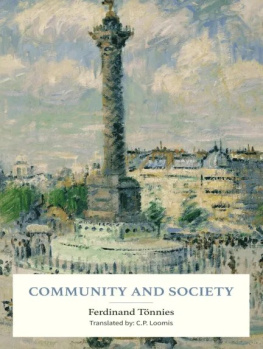Who Was Ferdinand Magellan?

Who Was Ferdinand Magellan?
By Sydelle Kramer
Illustrated by Elizabeth Wolf
Grosset & Dunlap New York
To Hopey, whos been around the world tooS.K.
For BillE.W.
The scanning, uploading, and distribution of this book via the Internet or via any other means without the permission of the publisher is illegal and punishable by law. Please purchase only electronic editions and do not participate in or encourage electronic piracy of copyrighted materials. Your support of the authors rights is appreciated.
Text copyright 2004 by Sydelle Kramer. Illustrations copyright 2004 by Elizabeth Wolf. Cover illustration 2004 by Nancy Harrison. All rights reserved. Published by Grosset & Dunlap, a division of Penguin Young Readers Group, 345 Hudson Street, New York, New York 10014. GROSSET & DUNLAP is a trademark of Penguin Group (USA) Inc. Printed in the U.S.A.
Library of Congress Cataloging-in-Publication Data
Kramer, Sydelle.
Who was Ferdinand Magellan? / by Sydelle Kramer; illustrated by Elizabeth Wolf.
v. cm.
Contents: Who was Ferdinand Magellan? The boy becomes a man War hero A new king listens Getting ready Tricky seas Frozen in The Pacific The crossing The last battle End of the journey.
1. Magalhaes, Fernao de, d. 1521Juvenile literature. 2. ExplorersPortugalBiographyJuvenile literature. 3. Voyages around the worldJuvenile literature. [1. Magellan, Ferdinand, d. 1521 2. Explorers. 3. Voyages around the world.] I. Wolf, Elizabeth, 1954 ill. II. Title.
G286.M2K76 2004
910.92dc22
2003021264
| ISBN: 978-1-101-64001-2 | 10 9 |
Who Was Ferdinand Magellan?
Imagine a time when no one was sure the Earth was round when people believed theyd topple over the edge if they sailed too far from home. Imagine a time when most people didnt know there was a Pacific Ocean. Go back five hundred years, when whole continents were still undiscovered, when people thought the Earth was tiny and that monsters swam through its waters. Yet one man decided to sail his ship through unknown seas and discover what was out there.

He was not the first to make such a perilous voyage. But he went farther and stayed away longer than anyone had before. Because of his brains and courage, he is known for being the first man to circumnavigatesail aroundthe globe.
Who was he?
Ferdinand Magellan.

Chapter 1
The Boy Becomes a Man
Sometime around 1480 in Portugal, a boy named Ferdinand was born to the Magellan family. The Magellans were of noble blood, but they had little money or power. They owned a farm far from the sea. This was where Ferdinand, the youngest of three children, grew up. Their house wasnt fancy: The family lived on the top floor and their cows, goats, sheep, and chickens lived on the bottom.


Ferdinands life changed around the time he turned twelve. Portugals queen, Leonora, needed pages. Pages were boys who ran messages and did errands for the royal family. Ferdinand was chosen for the job. Pages didnt just work. They received a good education and met the most important people in the land. A clever boy could make the job his first step to success.

So Ferdinand left home for Lisbon, the capital of Portugal. The lad who had never seen the ocean found himself in a city right on the coast. What a place it was! Lisbons harbor was crammed with graceful sailing ships, and its docks overflowed with goods from faraway ports. There was gold and there was silk. And there were spicespepper, cloves, ginger, nutmeg, and cinnamon. Spices were valuable because they were used to make beer. They also made meat and other foods taste better. Most important of all, though, they kept food from spoiling.





Spices were very expensive. Thats because most of them came from Asia, thousands of miles from Portugal. Spices grew in countries like India and in those we now call Sri Lanka and Indonesia. The Moluccas, or Spice Islands, part of Indonesia, were the richest of all. But traveling from Europe to these islands was difficult and dangerous.

In Ferdinands day, the only way to bring back these spices from far-off places was to take the Spice Route. This was a long path over both land and sea, winding through Asia, where the spices grew, across the Indian Ocean, through the Middle East, and on to the city of Venice.

For eight hundred years, Arabs had control of the Spice Route. Together with their trading partners in Venice, they sold the precious goods for high prices.
But what if a country found a new route to Asia? Then it could get spices on its own. It could make a fortune. The new route had to be by sea alone. That was the only way to avoid Arab lands.
The Portuguese wanted to take over the spice trade. So they built a powerful navy. From the mid-1400s, they had been sending ships to search for a direct sea route to Asia.
Spain sought the very same route. It had a strong navy too. In 1492 just about the time Ferdinand became a page, Spains king and queen sent Christopher Columbus across the Atlantic to find Asia. Instead, he stumbled onto North America.


By 1494, the competition between Portugal and Spain was so fierce that they almost went to war. But the two countries agreed to divide the world in half. A line was drawn down the middle of a map. Spain could claim all lands to the west of the line. Portugal could claim all lands to the east. The two countries also agreed never to sail through the others territory.
Next page
































